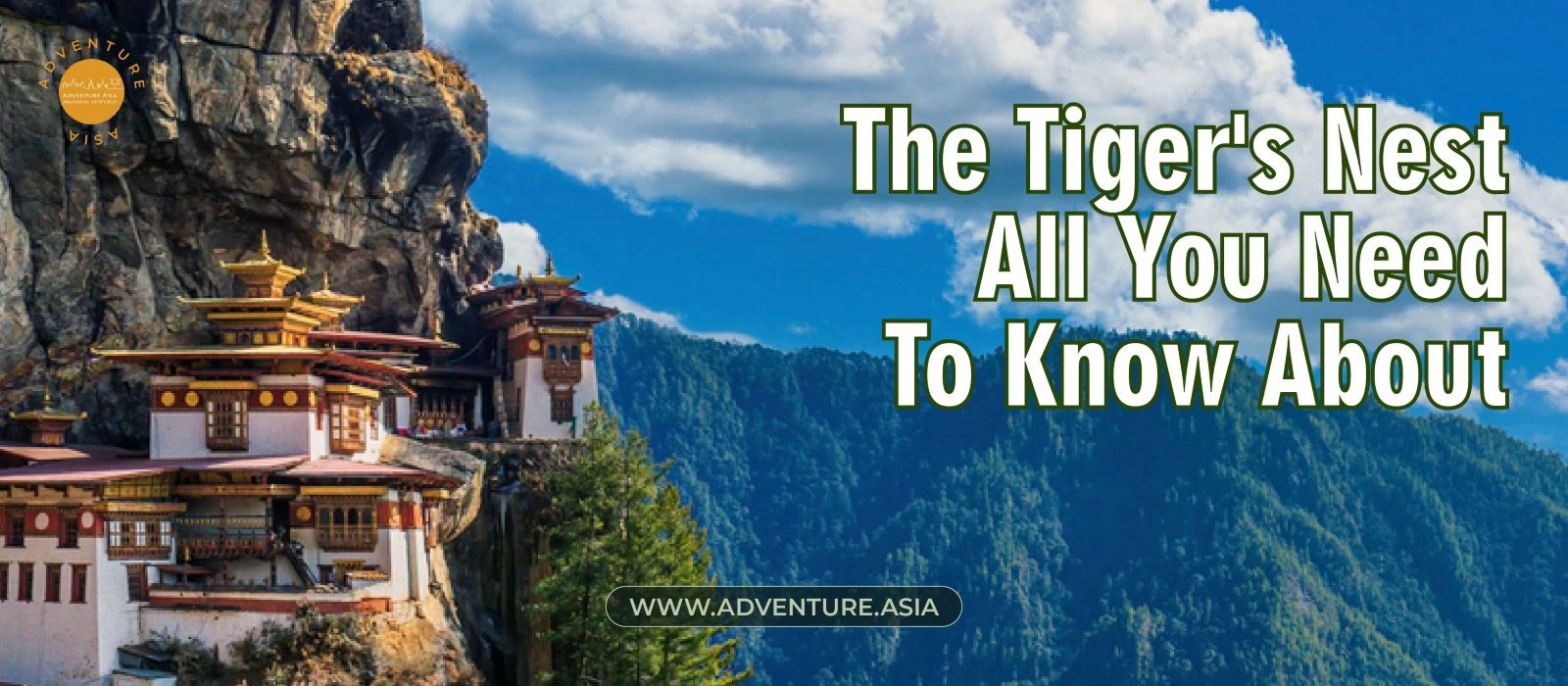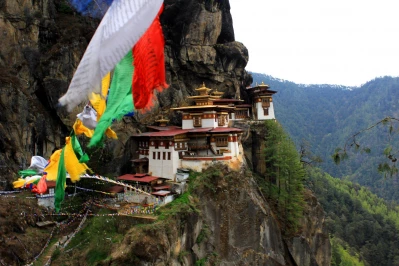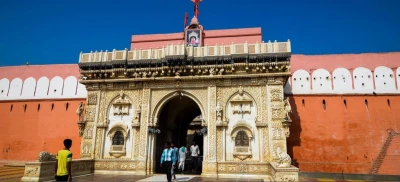
The Tiger’s Nest in Bhutan - One of the best thing to do
- 1. Where is Tiger’s Nest in Bhutan
- 2. Tiger’s Nest Monastery viewpoint
- 3. How hard is the Tiger’s Nest Bhutan hike?
- 4. Best time to visit Tiger’s Nest in Bhutan
Discover the unparalleled beauty of Bhutan's top hiking and trekking tours, offering a perfect blend of stunning landscapes and rich cultural experiences.
The Tiger’s Nest in Bhutan is among the world's best day hikes, featuring the iconic Paro Taktsang monastery clinging to a 900-meter tall cliff. Despite its surreal appearance, the hike is manageable for those with average fitness and conveniently located near the main airport. However, due to Bhutan's unique tourist tax, it remains largely undiscovered by international tourists. This guide provides essential information on how to tackle the hike, reach the site, anticipate difficulty levels, and prepare for your visit.
1. Where is Tiger’s Nest in Bhutan
The Tiger’s Nest Monastery sits approximately 15 kilometers from both Paro town and the Paro International Airport in western Bhutan, making it quite accessible. A paved parking area is just a 30-minute drive from Paro, though the road leading to the trailhead can be narrow and winding at times, it's not steep or hazardous. Your Bhutanese tour guide can arrange transportation to the trail's start. Perched on a steep cliff above the Paro valley, the monastery can only be reached by hiking; there are no cable cars or roads leading directly to it. Regardless of who you are, a hike is necessary!
2. Tiger’s Nest Monastery viewpoint
After approximately 2 hours of hiking, you'll arrive at the renowned Tiger’s Nest Monastery viewpoint. This vantage point offers breathtaking views of the monastery perched on the edge of a towering cliff. The monastery, a highlight of the Tiger’s Nest in Bhutan, is incredibly photogenic, and any camera or phone will capture stunning images of it; no special equipment is necessary. The sight is awe-inspiring, and you may find yourself wanting to linger for hours, taking in the massive cliff with its sheer 900-meter (3,000-foot) drop. Constructed in 1692, it's remarkable to think that such a fantastic structure was built on this precipice. Personally, it ranks among my favorite sights worldwide. The viewpoint offers multiple tiers, providing ample space to spread out and capture photos. While the initial viewpoint tends to draw crowds, venturing lower and closer to the monastery can lead to even more impressive photo opportunities.

3. How hard is the Tiger’s Nest Bhutan hike?
The difficulty of the Tiger’s Nest in Bhutan hike will vary based on your age, fitness level, and acclimation to elevation. Young and fit hikers will likely find it relatively easy to reach the Tiger’s Nest.
For most, however, the hike is moderately challenging. Older individuals or those less accustomed to hiking may find it tough, although it's manageable with patience. People as young as 3 and as old as 85 have completed it, albeit with some difficulty.
The trail involves uphill sections on rough terrain, and the high altitude of 3,100 meters (10,170 feet) presents an additional challenge for those accustomed to sea level. Some may experience headaches due to altitude, but rest and ibuprofen can alleviate symptoms.
If you anticipate difficulty, consider saving the hike for later in your Bhutan itinerary to allow for better acclimatization. Additionally, the Tiger’s Nest serves as a memorable conclusion to your trip, given its status as one of the top attractions in Bhutan.
To ease the journey, walking sticks or horse rentals are available at the trailhead, with horses able to transport you to the Taktsang cafe, roughly halfway to the monastery. However, further ascent must be completed on foot. Note that the hike is not feasible for those with disabilities or in wheelchairs.
4. Best time to visit Tiger’s Nest in Bhutan
The optimal periods to explore Bhutan and embark on the Tiger’s Nest hike are typically during autumn (October to December) or spring (March to May), characterized by dry and sunny weather. Shoulder months like September can also offer favorable conditions.

However, don't discount cloudy or rainy days for your visit to Tiger’s Nest. Despite less-than-ideal weather, the monastery remains picturesque, with opportunities for captivating photographs. During my initial visit to Taktsang, persistent clouds and rain created a mystical ambiance, with swirling mists enhancing the mountain's allure. This atmospheric setting adds an extra layer of charm to tours to Bhutan, providing unique and memorable experiences for visitors.
As for the best time of day to commence the hike, it hinges on your preferences. Most tours commence around 8 AM, ensuring arrival at the monastery before noon, allowing ample time for leisurely hiking, sightseeing, and photography. Morning hours also offer cooler temperatures conducive to trekking.
Alternatively, starting later in the day might enable you to avoid crowds, with better lighting for photography. On sunny days, the monastery is best photographed around noon or later, as earlier times may result in partial or full shading. Nonetheless, picturesque shots are still attainable earlier in the day. This flexibility allows for personalized experiences, whether you're on guided tours in Bhutan or exploring independently.
Opening Hours & Entrance Fees:
- Opening Hours: From 8 AM to 1 PM and from 2 PM to 5 PM
- Adults: 2,000 BTN ($25 USD)
- Kids 6-18: 1,000 BTN ($12 USD)
- Kids 0-5: Free
Are you seeking a unique and unparalleled adventure experience at Tiger's Nest in Bhutan? Contact Adventure Asia today! We specialize in providing soft to medium vacation options for adventurous individuals who are looking for uniquely styled expeditions, rather than traditional tourist-oriented itineraries. With our dedicated and professional support, you'll have the opportunity to explore Tiger's Nest in the most special and remarkable way. Reach out to us today for consultation and booking!





















